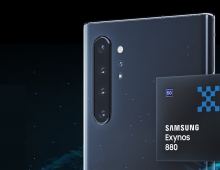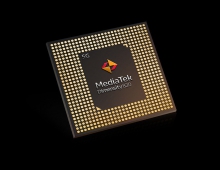
Chinese Chip Maker UNISOC Upgrades its Tablet Chipset Portfolio, Brings 85Hz E-ink Displays to Smartphones
UNISOC, a China-based supplier of mobile communications chipsets and IoT chipsets and a core subsidiary of Tsinghua Unigroup, announced the implementation of 85Hz screen refresh rate technology on e-ink screens with FHD+ resolution, and also upgraded its chipset series for tablets.
E-ink displays are typically used in e-readers such as Amazon's Kindle ebook device, mainly bacause they are eye-friendly and power-efficient.
Currently available e-ink display products are generally have a low screen refresh rate, resulting in a lagging effect and possibly to shadows on the screen.
The e-ink display devices require more CPU power than LCD and OLED display devices. UNISOC claims that it has optimized the algorithm for the refresh mode of an e-ink display to achieve a refresh rate of 85Hz at an FHD+ resolution. The company promised that the first high refresh rate e-ink display phones will be officially launched in June.
In related news, UNISOC recently upgraded its tablet portfolio, delivering chipsets to premium, mainstream, and entry-level tablets.
The T710 and T7510 SoCs are both designed to deliver performance, low latency and seamless connection inherited from the 7 series. The chips are also built on the UNISOC-proprietary 4K image processing solution Vivimagic.
The 7 series also supports both 5G and 2.4G Wi-Fi connections. The heterogeneous dual-core NPU has improved AI computing power, boosting intelligent upgrades across a variety of scenarios covering industrial, commercial, healthcare, home, education and more.
The T7510 is based on an octa-core architecture with 4x Cortex-A75 cores clocked at 2.0GHz and 4x Cortex-A55 cores clocked at 1.8GHz. It also has a 800MHz IMG PowerVR GM 9446 GPU and a V510 baseband. With the compatibility of both SA and NSA modes, supports sub-6GHz 5G bands (n41/n78/n79) with up to 100MHz of bandwidth and 2G, 3G, 4G, 5G networks, local connectivity includes Wi-Fi 5 (ac) and Bluetooth 5.0.
In the mainstream, the T618 and T310 support gigabit-speed internet speeds, feature 2K codecs tailored for tablets, AI Adaptive eye protection, NPU, ISP, VDSP and other processing units.
The SC9863A, SC9832E, and SC7731E solutions are designed for entry-level tablets, featuring support for multi-channel data connections, HD audio/ video playback, AI scene recognition, and 5G connectivity.
Unisoc was formed in May 2018 out of the merger of two Tsinghua Unigroup subsidiaries — Spreadtrum Inc. and RDA Microelectronics Inc. Chipmaker Spreadtrum had been a listed company before Tsinghua Unigroup acquired it in 2013. Tsinghua Unigroup acquired RDA Microelectronics the following year.
Spreadtrum Communications, Inc. originally produced chips for GSM handsets, but most of its resources are now focused on the Chinese TD-SCDMA 3G standard. In addition to GSM and combined GSM/TD-SCDMA baseband chipsets, Spreadtrum also supplies chips for Chinese mobile TV standards.
RDA Microelectronics was a fabless semiconductor company that designs, develops and markets wireless system-on-chip and radio-frequency semiconductors for cellular, connectivity and broadcast applications.
In January 2019, the chipmaker made a strategic deal with American test equipment giant Keysight. A few months later, it partnered with British Intellectual Property (IP) licensing firm Imagination on brand-new neural network accelerator IMG Series3NX.
Unisoc is about to finish raising 5 billion yuan ($713 million) of new funds amid China’s efforts to build up the country’s chipmaking capacity.





















